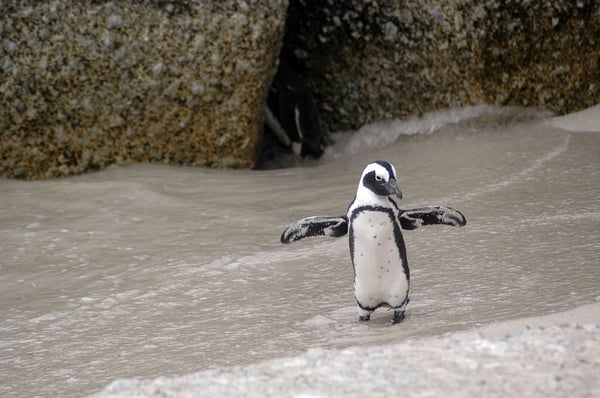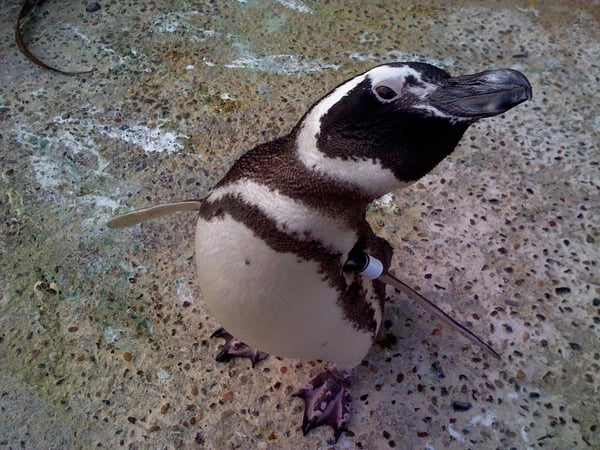It has been a few years since we symbolically adopted a Magellanic penguin and named her Spiffy. We’re always excited to offer updates on her life in South America, from her annual migrations to the recent birth of her chicks! For World Penguin Day this year, we’re happy to share some of the latest developments in the life of our living penguin mascot.
A couple of weeks ago, the two chicks that Spiffy raised left the colony to begin life on their own. They will now be slowly making their way up the coast of Argentina heading towards Brazil, where they will find bright sunshine to help them catch food. Now that her role as a parent is over, Spiffy can relax and recover the weight she lost over the last few weeks.
.jpg?width=600&name=1024px-Magellanic_Penguin_with_chicks_(5540843327).jpg)
Before egg-laying, Spiffy weighed over 13 pounds, but now that the chicks have left the colony that has dropped to just 9. Parents often lose one-third of their body weight raising chicks, since they are driven by their natural instinct to make this sacrifice for their chicks, like most parents.
When penguins are not incubating eggs or raising chicks, it is easy for them to catch enough food to feed themselves. They do not need to return to their nest every day, because they can just sleep out in the ocean where the fish are. They are free to follow the fish wherever they go. Now Spiffy can wake up each morning with breakfast ready and waiting, but it was very different when there were eggs or chicks to look after.
When the chicks hatch, much of the food that the parents catch is given to them when they get back to the nest. The parents have to get up early in the morning and swim 25 miles to where the fish are, catch as much as they can during the day, and then swim 25 miles back to the nest to feed the hungry chicks in the evening. After feeding the chicks, they have to groom them to remove fleas and ticks. On a good day, Spiffy might get 6 hours of rest before setting off again.

Not only do the penguins have to travel a lot after laying the eggs, but they are also only able to eat once every two days. Since penguins always lay eggs and raise the chicks in pairs, one of the penguins has to stay on land keeping the eggs warm and safe, while the partner is out at sea feeding. They take turns of course, but even so instead of eating fish every day, from the moment that the eggs are laid, Spiffy can only eat once every two days, meaning each parent can only eat half as much as they did before. Imagine a human couple having a baby and from then on instead of getting up each morning to enjoy breakfast together, the parents have to run 25 miles to the supermarket to buy fresh milk and food and run 25 miles back home to feed the baby!
Most of the chicks that have recently left will not return to the colony for 5 years. They remain much further north, off the coast of Brazil where there is more sunlight in winter. A few do return to the colony in summer, like the juveniles in the photo, but for most, it is not worth making such a long journey south until they are ready to breed at 5 years of age. It’s possible that the juveniles in the photo have returned to the colony to spend time with their parents, who may well be under the bush with them.

The chicks eventually return to raise chicks of their own where they were born, and I expect that they even remember the location within the colony where they lived as youngsters. That would mean that the chicks often nest close to their parents when they return to lay eggs, and would almost certainly remember each other. It is likely that Spiffy will get to meet the chicks again at some point in the future, and may even end up nesting side by side.
Now it is time for Spiffy to rest and relax out at sea. The exhausted parents find a nice spot with plenty of fish and will remain there for a few weeks until they have completely rested and recovered their weight. When they do finally come back to the nest it will be to go through the annual molt, which we will be able to cover in our next check-in with Spiffy the Penguin!
Posted in Lifestyle




